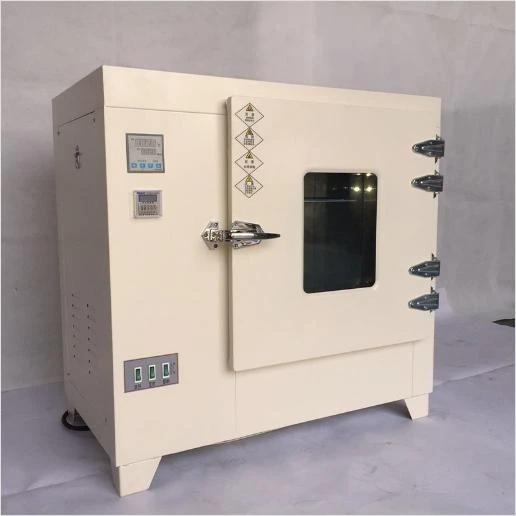Factories for Smoke Density Testing Equipment and Solutions
Smoke Density Testers Understanding Their Importance and Manufacturing
In today’s industrial landscape, the safety and quality of materials used in buildings and vehicles have become paramount. One critical aspect of these materials is their smoke density, which is measured using smoke density testers. These devices play a vital role in ensuring compliance with fire safety standards and regulations by assessing how much smoke a material produces when it burns. This article delves into the significance of smoke density testers, explores the manufacturing process, and highlights key manufacturers in the field.
What is Smoke Density Testing?
Smoke density testing measures the opacity of smoke produced during combustion. This is crucial in evaluating the potential visibility hazards and toxicity that can result from a fire. Materials that emit low smoke density are more desirable, especially in public spaces like hospitals, schools, and transportation systems where quick evacuation is essential.
The testing process typically involves exposing a sample material to a heat source and then measuring the smoke produced via various methods, including light transmission through the smoke. The results provide valuable data to designers, engineers, and safety inspectors, enabling them to make informed choices regarding material selection.
The Importance of Smoke Density Testers
Smoke density testers are integral to fire safety protocols. The information they provide is critical for
1. Compliance Regulatory bodies like the National Fire Protection Association (NFPA) and Underwriters Laboratories (UL) impose stringent requirements for smoke density. Smoke density testers help manufacturers comply with these regulations, ensuring that their products are safe for public use.
2. Product Development In the development phase of building materials and products, smoke density testers are used to refine formulations and improve safety features. Developing materials with lower smoke density can lead directly to better safety outcomes in case of a fire.
3. Insurance and Liability Insurers often require proof of safety compliance before offering coverage. Accurate smoke density testing ensures that businesses can secure the necessary insurance and protect themselves against potential liabilities in the event of a fire incident.
Manufacturing of Smoke Density Testers
The production of smoke density testers involves precise engineering and adherence to quality control standards. Here’s a brief overview of the manufacturing process
1. Design and Prototyping The initial stage involves research and design. Engineers create prototypes, carefully considering factors such as sensitivity, measurement range, and ease of use.
smoke density tester factories

2. Material Selection Manufacturers select high-quality materials that can withstand the rigors of thermal testing. The components must be durable, reliable, and easy to calibrate, ensuring accuracy in testing conditions.
3. Assembly The next step entails assembling the components, including sensors, control units, and displaying systems. Precision is vital during assembly to ensure that the testers provide accurate readings.
4. Calibration and Testing After assembly, the testers undergo rigorous testing and calibration to guarantee their functionality and accuracy. Calibration is crucial as it helps the device to measure smoke density accurately under defined conditions.
5. Quality Control Manufacturers implement strict quality control measures throughout production. Finished products are tested to ensure they meet regulatory standards and performance expectations.
6. Distribution Finally, once the smoke density testers pass all tests, they are packaged and distributed to various markets, including construction companies, regulatory agencies, and testing laboratories.
Key Manufacturers in the Field
Several factories around the world specialize in producing smoke density testers. Notable manufacturers include
1. FIRETEST Renowned for their innovative approach, FIRETEST offers a wide range of smoke density testers known for their accuracy and reliability.
2. MATEST This company provides high-quality testing equipment, including smoke density testers, well-regarded in both construction and safety industries.
3. INTERTEK As a global leader in testing, inspection, and certification, INTERTEK produces state-of-the-art smoke density testers that are widely used for regulatory compliance.
4. UL (Underwriters Laboratories) Known for setting safety standards, UL's smoke density testing equipment is integral in compliance testing across various sectors.
In conclusion, smoke density testers are crucial tools that ensure material safety and compliance in myriad sectors. The importance of reliable testing cannot be overstated, as it directly links to fire safety and the preservation of lives and property. With evolving technology and stringent regulations, the future of smoke density testing looks promising, making it a continually relevant field in manufacturing and safety.
-
Why the Conductor Resistance Constant Temperature Measurement Machine Redefines Precision
NewsJun.20,2025
-
Reliable Testing Starts Here: Why the High Insulation Resistance Measuring Instrument Is a Must-Have
NewsJun.20,2025
-
Flexible Cable Flexing Test Equipment: The Precision Standard for Cable Durability and Performance Testing
NewsJun.20,2025
-
Digital Measurement Projector: Precision Visualization for Modern Manufacturing
NewsJun.20,2025
-
Computer Control Electronic Tensile Tester: Precision and Power for the Modern Metal Industry
NewsJun.20,2025
-
Cable Spark Tester: Your Ultimate Insulation Assurance for Wire and Cable Testing
NewsJun.20,2025
 Copyright © 2025 Hebei Fangyuan Instrument & Equipment Co.,Ltd. All Rights Reserved. Sitemap | Privacy Policy
Copyright © 2025 Hebei Fangyuan Instrument & Equipment Co.,Ltd. All Rights Reserved. Sitemap | Privacy Policy
